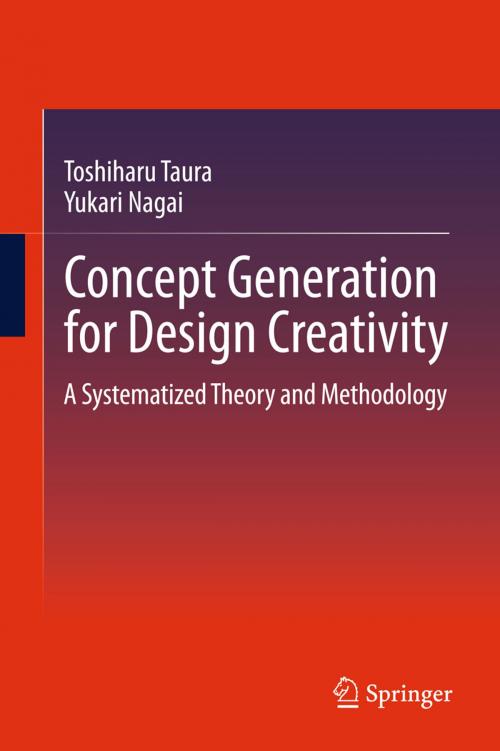Concept Generation for Design Creativity
A Systematized Theory and Methodology
Nonfiction, Science & Nature, Technology, Engineering, Industrial, Industrial Design| Author: | Yukari Nagai, Toshiharu Taura | ISBN: | 9781447140818 |
| Publisher: | Springer London | Publication: | July 26, 2012 |
| Imprint: | Springer | Language: | English |
| Author: | Yukari Nagai, Toshiharu Taura |
| ISBN: | 9781447140818 |
| Publisher: | Springer London |
| Publication: | July 26, 2012 |
| Imprint: | Springer |
| Language: | English |
The concept generation process seems like an intuitional thought: difficult to capture and perform, although everyone is capable of it. It is not an analytical process but a synthetic process which has yet to be clarified. Furthermore, new research methods for investigating the concept generation process—a very difficult task since the concept generation process is driven by inner feelings deeply etched in the mind—are necessary to establish its theory and methodology.
Concept Generation for Design Creativity – A Systematized Theory and Methodology presents the concept generation process both theoretically and methodologically. Theoretically, the concept generation process is discussed by comparing metaphor, abduction, and General Design Theory from the notions of similarities and dissimilarities. Analogy, blending, and integration by thematic relation have been explained methodologically. So far, these theories and methods have been discussed independently, and the relations among them have not been clarified. Two newly developed research methods to investigate the concept generation process are clearly explained: the explanation-based protocol analysis and constructive simulation.
By reading Concept Generation for Design Creativity – A Systematized Theory and Methodology, students, researchers and lecturers in design disciplines (including engineering design, industrial design, software design, CHI, design education, and cognitive science ) can obtain a clear picture of the advanced research findings and the outline of the theories and methods for concept generation. Furthermore, readers are expected to achieve the competence to generate new concepts.
The concept generation process seems like an intuitional thought: difficult to capture and perform, although everyone is capable of it. It is not an analytical process but a synthetic process which has yet to be clarified. Furthermore, new research methods for investigating the concept generation process—a very difficult task since the concept generation process is driven by inner feelings deeply etched in the mind—are necessary to establish its theory and methodology.
Concept Generation for Design Creativity – A Systematized Theory and Methodology presents the concept generation process both theoretically and methodologically. Theoretically, the concept generation process is discussed by comparing metaphor, abduction, and General Design Theory from the notions of similarities and dissimilarities. Analogy, blending, and integration by thematic relation have been explained methodologically. So far, these theories and methods have been discussed independently, and the relations among them have not been clarified. Two newly developed research methods to investigate the concept generation process are clearly explained: the explanation-based protocol analysis and constructive simulation.
By reading Concept Generation for Design Creativity – A Systematized Theory and Methodology, students, researchers and lecturers in design disciplines (including engineering design, industrial design, software design, CHI, design education, and cognitive science ) can obtain a clear picture of the advanced research findings and the outline of the theories and methods for concept generation. Furthermore, readers are expected to achieve the competence to generate new concepts.















